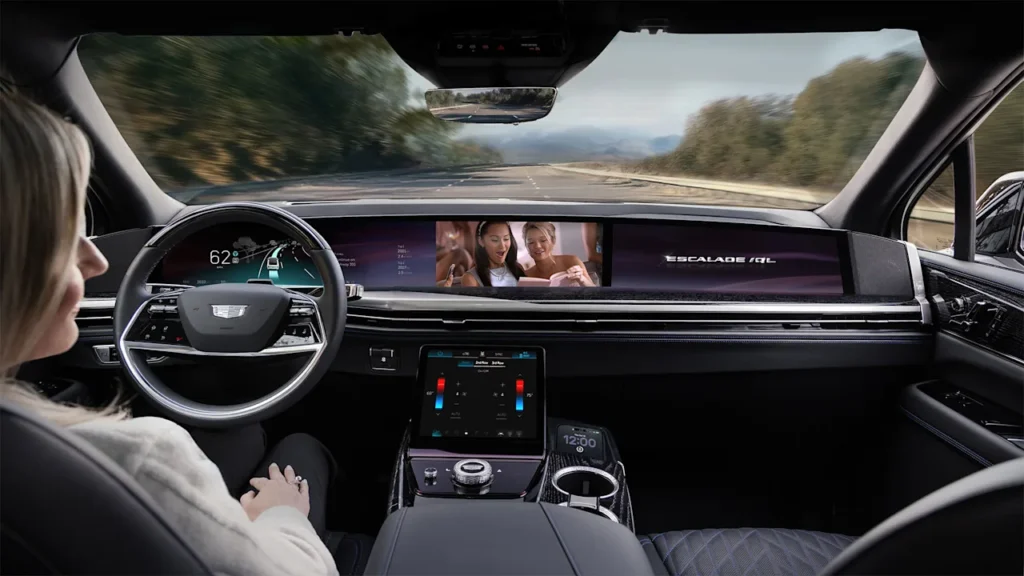
GM just offered a glimpse into an AI-powered future in which drivers read a book or answer texts while their car whisks them to their destination.
The company announced its plans to introduce a suite of advanced software systems into its vehicles on Wednesday, bringing the traditional auto maker up to speed on in-vehicle tech. At its GM Forward media event in New York, GM outlined its near-term plans for reimagining cars as “intelligent assistants” that drive their owners around.
The company announced a major update to its driving assistance system that would bring hands-free, “eyes-off” highway driving to vehicles, starting with the Cadillac Escalade IQ in 2028. The technology will rely on integrated lidar, radar and cameras and a new internal and external turquoise lighting system to signal that the self-driving tech is active. The new eyes-off driving technology will push beyond the limits of GM’s existing “Super Cruise,” system, which offers hands-free highway driving but requires a driver’s attention.
Next year, GM also plans to add Google’s Gemini AI into its vehicles, “making it possible to talk to your car as naturally as you would to a fellow passenger.” Down the road, GM plans to introduce its own AI assistant tied into OnStar, its subscription service that offers safety, security and navigation features. The company says its future custom AI could be useful for “explaining one-pedal driving in your new vehicle, spotting a maintenance issue early, or finding the perfect place for dinner.”
Controversially, GM apparently plans to abandon support for connecting Apple CarPlay and Android Auto through a smartphone in all of its vehicles, pushing an in-house custom infotainment system instead. For potential car buyers already accustomed to phone projection systems, the decision sounds like a non-starter. On The Verge’s Decoder podcast, GM Chief Product Officer Sterling Anderson likened the decision to Apple removing the disk drive from its laptops – a strange analogy and a risky bet, considering CarPlay’s popularity and ease of use.
GM also announced plans to debut its own “centralized computing platform” that will run under the hood in both its gas and electric vehicles. The platform will weave together disparate systems like propulsion, steering, safety and infotainment, uniting them on “a single, high-speed computing core” and is set to debut in the 2028 Escalade IQ. In other high tech investments, GM will expand its program for home energy capture and storage and integrate more collaborative robots to supplement its human workforce.
GM’s outlook brightens
“Looking forward, we believe our investments in advanced technologies, manufacturing, and talent will build on our solid foundation, and make GM even more innovative, resilient and capable of leading through change,” GM CEO Mary Barra said in the company’s earnings call this week.
GM’s stock popped on Tuesday, jumping the largest amount in almost six years after the company adjusted its expected annual profits upward. The auto maker attributed the positive outlook to new policies meant to lighten the impact of tariffs on U.S. car makers and its own plan to reduce its losses on electric vehicles, which have taken a hit under Trump.
“… With the evolving regulatory framework and the end of federal consumer incentives, it is now clear that near-term EV adoption will be lower than planned,” Barra said. “That is why we are reassessing our EV capacity and manufacturing footprint… By acting swiftly and decisively to address overcapacity, we expect to reduce EV losses in 2026 and beyond.
In spite of lapsing EV tax credits and an administration steering in the opposite direction, GM still calls electric vehicles its “North Star.”
